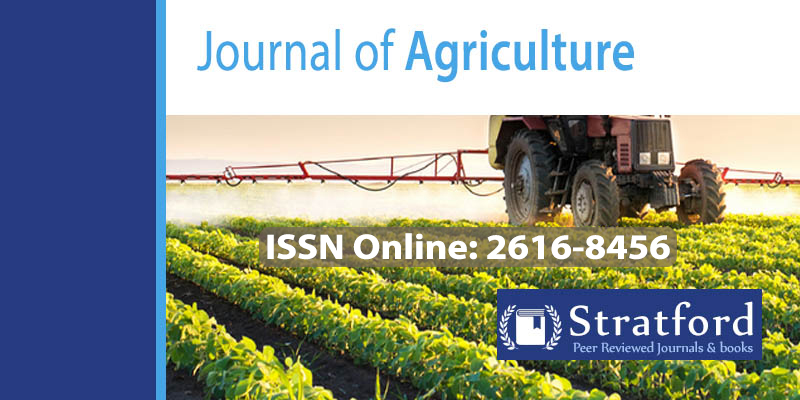Yield Production for Soybean Varieties under Different Spacing on Maize Intercrop
DOI:
https://doi.org/10.53819/81018102t6014Abstract
Soybean is an important crop not only in African countries, but also in the entire world being one of the most protein containing legume from its seeds which is used as food among other uses of the crop such as Nitrogen fixation. However, in Africa, low production levels have been recorded over the years with Africa contributing to 1% of the entire world soybean production. This paper therefore sought to determine the yield production for soybean varieties under different spacing on maize intercrop. The paper adopted experimental research design. From the analysis results on the measure of the total yield production for soybean varieties on different spacings on maize intercrop, the study established that DPSB variety seeds had the highest average weight while Gazelle and Nyala variety had the least average weight of seeds. The researcher recommended DPSB19 variety at 30cm with an average of 14.10335g with only the research boundary factors maintained on the total yield production for soybean varieties on different spacing on maize intercrop.
Keywords: Yield Production, Soybean Varieties, Maize Intercrop, Spacing
References
Aditiya, M., Pratap, S., & Nam, K. (2016). Breeding Oilseed Crops for Sustainable Production. Kanpur, India. Retrieved from https://doi.org/10.1016/B978-0-12-801309-0.00012-4
Clemente, T., Dan, E., & Cahoon, E. B. (2019). Soybean Oil. 15(3), 1030-1040.
Cornelius, S., & Godsmith, N. (2019). Row Spacing and Seeding Rate Effects on Soybean Seed Yield. doi:10.5772/intechopen,76784.
Dalia, M., Khojely, Z., Seifeldin, E., Ibrahim, D., Enoch, S., & Tianfu, H. (2018, April). History, current status, and prospects of soybean production and research in sub-Saharan Africa. The Crop Journal, 6(3). https://doi.org/10.1016/j.cj.2018.03.006
David D., S. S. (1998). Plant Production Science (Vol. 1). https://doi.org/10.1626/pps.1.264
Dragan, L. (2018). Farmer groups find a solution to smaller quantitiesof their soybean produce. Kenya Agricultural and Livestock Research Organization, Agriculture and Food Authority. farmbiz. Retrieved February 12, 2021.
Gwata, D., Wofford, P., & Pfahler, K. (2014). Genetics of promiscuous nodulation in soybean: nodule dry weight and leaf color score. 95, 154-157. https://doi.org/10.1093/jhered/esh017
Helsel, R., & Minor, C. (n.d.). Soybean Variety Selection. University of Missouri Extension. Retrieved February 6, 2021, from http://extension.missouri.edu/publications.
Kasamani, S. (10 December 2018). Farmer group finds solution to smaller quantities of soya beans produce. Kenya Agricultural and Livestoch Research Organization (KALRO). Njoro: ISNB. Retrieved February 12, 2021.
Muriithi, K., et al. Grain Crops Extension, Plant and Soil Sciences. (2015). Estimating Soybean Yield. University of Kentucky- College of Agriculture, Department of Agriculture. U.K.: University of Kentucky. Retrieved February 22, 2021, from www.ca.uky.edu.Issued 12-2015.
Nassiuma, D. (2002). Stability assessment of soybean varieties in Kenya. 10(2). https://doi.org/10.4314/acsj.v10i2.27546
Njeru, J., Dolph, N., Njoroge G., Peterson, P., Samuel, N., & Matt, M. (20-25 October 2013). Performance of soybean genotypes evaluated for yield and protein content in Nakuru County, Kenya. Kenya Agricultural and Livestock Research Organization (KALRO). Njoro: INSB. Retrieved February 12, 2021.
Sadie, M. (2015). South African Variety List as Maintained by the Registrar of Plant Improvement, Department of Agriculture, Fisheries and Forestry, Republic of South Africa.
Varsha, M. Gaonkar, K., & Mbira, A., (2019). Integrated Processing Technologies for Food and Agricultural By-Products. (S. RELX, Ed.) United States of America: Elsevier Inc. Retrieved from https://doi.org/10.1016/B978-0-12-814138-0.00004-6


